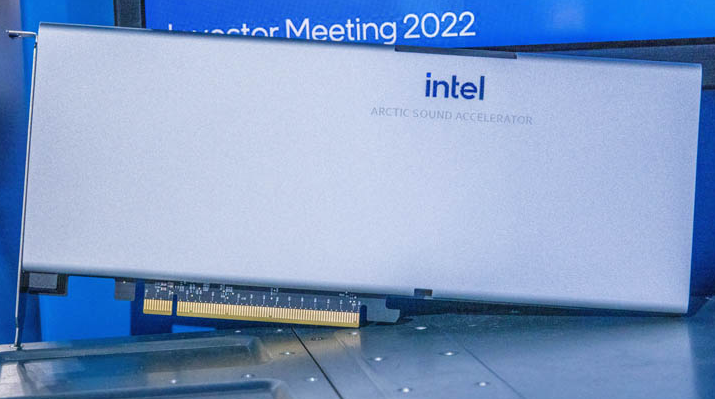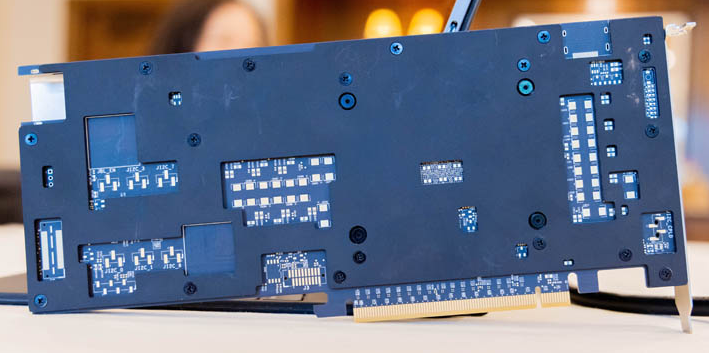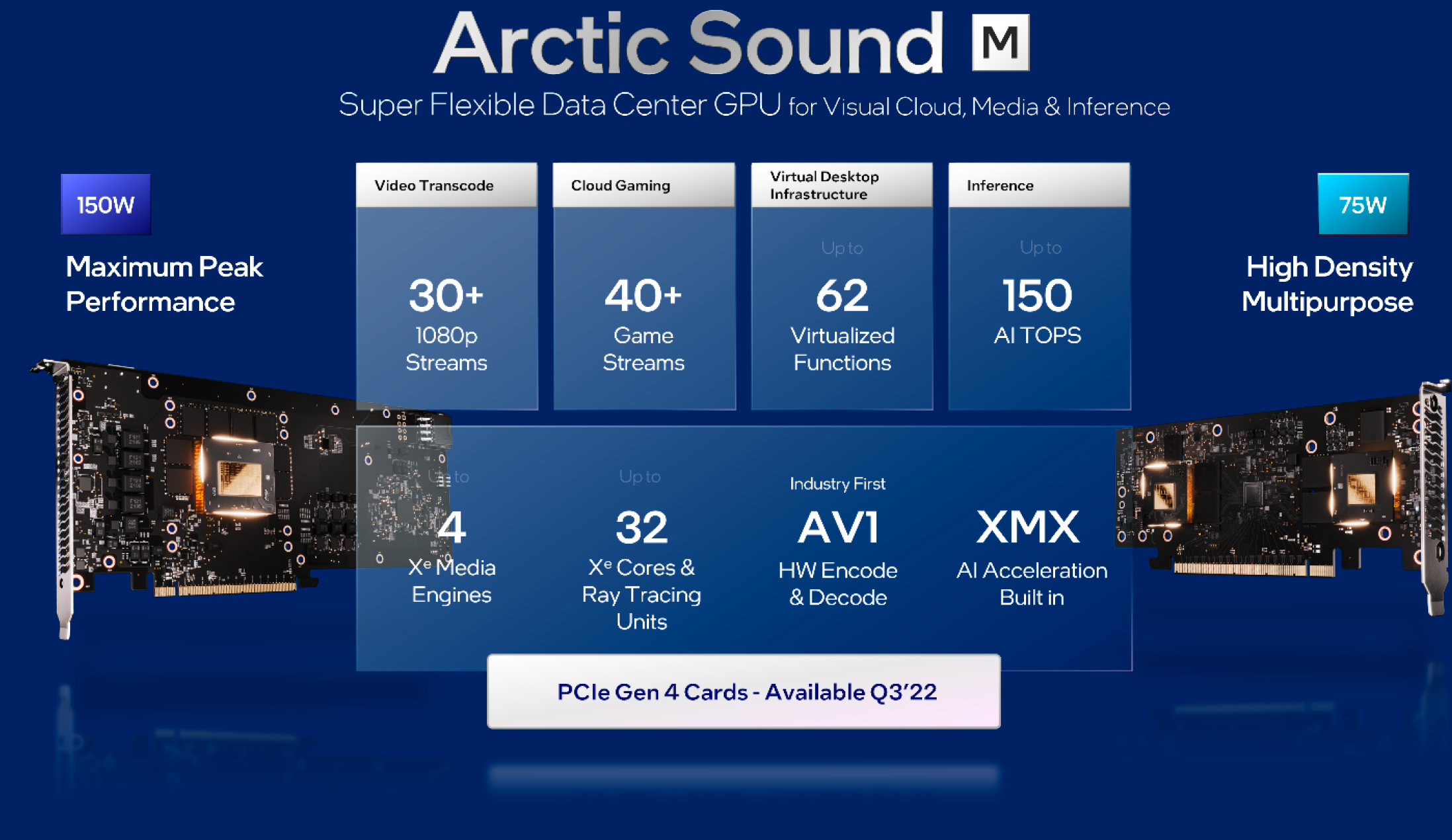Intel Displays Arctic Sound-M Graphics Cards
Passive and silent cooling
Intel's codenamed Arctic Sound graphics cards for data centers have been making rounds in the rumor mill for quite a while in one form or another. These cards were announced in late March (without fanfares, though) and should be available sometime in Q3 2022. Our colleagues from ServeTheHome were lucky enough to see these cards displayed at the Intel Vision event last week,
Intel's Arctic Sound family for data centers includes two boards — the ATS-M75 and the ATS-M150; their model numbers correspond to their maximum graphics power (TGP). The low-profile ATS-M75 card is based on two ACM-G10 graphics processors with eight GPU compute units, whereas the full-height ATS-M150 board is powered by the larger ACM-G11 GPU with 32 compute units, according to ServeTheHome.
While Intel's Arctic Sound-M graphics cards position themselves as data center GPUs, they are intended primarily for video, gaming, remote desktop, and other similar applications, but not heavy-duty GPU compute workloads. Meanwhile, as a bonus, Intel's discrete DG2 family GPUs also support XMX instructions, so they can accelerate AI inference workloads. As a result, you will not find Intel's ATS-M boards among the best graphics cards available today, though the ACM-G11 GPUs power desktop graphics boards for gamers.
Intel will offer its codenamed Ponte Vecchio compute GPUs designed explicitly for highly parallel computing workloads and leverages the appropriate (Xe-HPC) microarchitecture. Ponte Vecchio targets AI and high-performance computing applications that need higher performance than Intel's Arctic Sound products can provide.


One of the advantages that Intel's Arc Alchemist GPUs (and therefore Arctic Sound cards) have over competing products is hardware AV1 encoding support. For obvious reasons, Intel will heavily promote this feature coupled with these boards' relatively low power consumption.
Intel's own Xeon processors and Nvidia's GPUs dominate the video encoding/decoding applications market in the data center, so Arctic Sound will enable Intel to address the need since it is already quite familiar with the market. Meanwhile, Google's YouTube nowadays uses the company's custom Argos video transcoding units (VCUs) developed in-house, so it remains to be seen whether the video streaming service finds Intel's GPUs a more efficient solution than its own VCUs.
Intel will start shipping its Arctic Sound cards for virtual desktop, media processing, AI inference, and cloud gaming applications in Q3 2022.
Get Tom's Hardware's best news and in-depth reviews, straight to your inbox.

Anton Shilov is a contributing writer at Tom’s Hardware. Over the past couple of decades, he has covered everything from CPUs and GPUs to supercomputers and from modern process technologies and latest fab tools to high-tech industry trends.
-
hotaru251 Intel's overdone its gpu displays......either release em so ppl can review/judge them or just stop sharing until then.Reply
you can only carrot stick so long before you just make ppl angry :| -
Liquidrider Intel GPUs are turning into a marketing gimmick. And a Q3 2022 release date? They just announced they are delaying their Arc GPU .... again, making it OEM only & only available in China.Reply
This GPU won't get released until 2023 and even that is being optimistic. -
DavidC1 Guys, this is Arctic Sound, which doesn't have to do much with gaming. I agree with the delays but doesn't really count here, since the rumors are pointing to drivers as the reason and ATS parts are just for media.Reply
